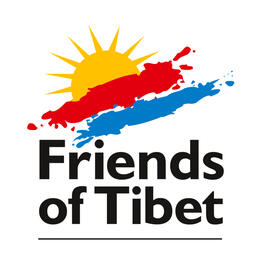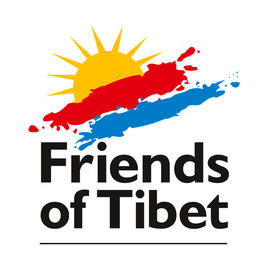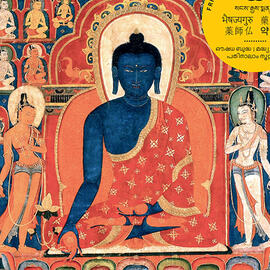
Friends of Tibet
Friends of Tibet is a people's movement to keep alive the issue of Tibet through direct action. Our activities are aimed at ending China's occupation of Tibet and the suffering of the Tibetan people. Friends of Tibet support the continued struggle of the Tibetan people for independence.
Why Tibet

Tibet, the inspiration behind the ideal of 'Shangri-la' or Paradise on Earth, has a rich and vividly unique culture of its own. Ruled by the Dalai Lamas since 1642, and for centuries before that by a succession of religious kings and other priestly rulers, it is one of the few nations in the world with such a long history of continued independence."For many Tibetans material life was hard, but they were not the victims of desire, and in simplicity and poverty among our mountains, perhaps there was more peace of mind than there is in most of the world," so says His Holiness the XIV Dalai Lama in his autobiography 'My Land and My People'.Tibet was a peaceful, independent state when, in 1949, it was invaded by China in an act of unprovoked aggression. In 1959 His Holiness the Dalai Lama was forced to seek political asylum in India, along with his entire government and tens of thousands of ordinary Tibetans. Since then Tibet has never been the same and the lives of all Tibetans has changed entirely. Faced with brutal oppression and treated as second-class citizens in their own country, many Tibetans still risk their lives to join their leader in exile. Here they are confronted with another problem — the sad predicament of refugees everywhere. To say the least, the fate of the vast majority who remain in Tibet is far worse.Throughout the early decades of the occupation, tens of thousands of Tibetans were killed and many more sent to prisons and concentration camps. During this period more than 6,000 temples and monasteries — including vast Buddhist universities and ancient libraries — were looted, burned and destroyed. Even today, despite some cosmetic changes, largely for the benefit of tourists or visiting dignitaries, Tibetan religion and culture has not recovered from the decades of suppression and continues to suffer from neglect and discrimination. Rampant and indiscriminate exploitation of Tibet's vast natural resources is also threatening the fragile ecological balance of the Roof of the World. However, the single biggest threat to the survival of the Tibetan people is China's policy of population transfer aimed at reducing Tibetans to an insignificant minority in their own country by sending in millions of landless, and jobless Chinese. The distinct cultural ties between India and Tibet — the most obvious being the spread of Buddhism from India to Tibet in the seventh century — is perhaps too well known to bear repeating here. The trade and economic ties between the two countries is perhaps even older. It is equally important to remember that India maintained independent relations with Tibet throughout our shared history. Never, until China's military occupation of Tibet after 1949, has India ever shared a common border with China. Today India spends more money to defend our northern border with Chinese occupied Tibet than we do to protect our border with Pakistan. Even in the case of our western border, much of the problem is linked to the political, economic and the military support that China gives to Pakistan.Joined together by almost the entire length of the mighty Himalayan range — India and Tibet are also inseparably linked in a physical sense. With such an extensive common frontier, the environmental changes on one side inevitably affects the other. It is for this reason that China's destruction of Tibet's fragile environment — not only through indiscriminate deforestation and mining but also by dumping nuclear and other toxic wastes — should be a major concern to every Indian. The implications of having China as our permanent northern neighbour or even the single issue of any of the rivers flowing from Tibet to India becoming polluted by toxic waste is too serious to be left to chance.Friends of Tibet believes that all the issues raised above are of a global nature — not only in terms of the principles involved but also in terms of their impact. It is no longer just a question of helping an oppressed people and supporting a peaceful and friendly neighbour. Today the question of Tibetan independence is inseparably linked to India's long-term future.Let us act now to make Tibet free!
Frequently Asked Questions (FAQ)

1. What is the Tibetan Medical System?
Answer: 'Sowa Rigpa' or the Science of Healing is one of the world's oldest known medical traditions dating back to the 4th Century AD. It has a historical background of more than two thousand years old. It flourished in the land of snow, which is popularly known today as the Roof of the World — Tibet. Tibetan medicine is a centuries-old traditional system encompassing spiritual, medical science and social behaviour in the paradigm of holistic health. It is popularly believed that Tibetan Medical System is essentially a teaching of Buddha himself as part of the ways to liberate human beings from the vicious cycle of suffering. The Tibetan medical system is based upon a synthesis of Ayurveda, Unani, Greek, indigenous Tibetan, and Chinese medical systems. The Tibetan medical system is practised in Tibet, India, Nepal, Bhutan, Siberia, China and Mongolia, and more recently in parts of Europe and North America.2. What is the philosophy behind Tibetan Medical System?
Answer: The Tibetan medical system embraces the traditional Buddhist belief that all illness ultimately results from the "Three Poisons" of the mind: Ignorance, Attachment and Aversion. Therefore, the mind, body and spirit play a very crucial role in understanding and the treatment of diseases as a whole. Buddhist philosophy states that everything in the universe is in a constant state of flux — that all phenomena are characterised by impermanence, and that the only permanent feature is impermanence itself. As Buddha said, "No matter whether perfect beings arise or not, it remains a fact, and a hard necessity of existence, that all creations are transitory." It is this impermanence that causes each and every being to suffer at one stage or another. Suffering is thus not accidental but springs from a specific cause, whether from this life or a previous life. Only through proper learning and the genuine practise of Dharma, one can liberate from the vicious cycle of suffering.3. How is the diagnosis done by a Tibetan Doctor?
Answer: Diagnosis of a disease or imbalance is done through pulse reading or pulse assessment, one of the ancient and sophisticated methods of diagnosing. Pulse Diagnosis is an ancient science of assessing the status of a patient's body, mind and soul. The disease is also diagnosed through urinalysis and healthy interrogation and understanding of one�s dietary and lifestyle factors. The diagnosis helps to treat various ailments and to prevent their occurrence.4. What is Tibetan medicine most effective for?
Answer: In addition to many common ailments, Tibetan Medicines also offers very effective treatment in controlling and even curing many major diseases like Asthma, Arthritis, Diabetes, Hypertension, Sinusitis, Eczema, Anxiety, General Cardio-Vascular, Liver and Kidney related-problems, Nervous Disorders, Gynecological problems, Gastro-Intestinal Disorders, Chronic Cold and Allergic problems, Psychosomatic problems, Heart-related issues, etc. The medicines also help in controlling primary cancer cases.5. Are there animal products or preservatives used in making Tibetan Medicines?
Answer: No animal products; preservatives or any artificial flavours are used in the manufacturing of Tibetan medicines based on herbal formulas. And Tibetan medicines and incense are consecrated according to the Tibetan Buddhist tradition.6. Is there a suggested way to take Tibetan medicine?
Answer: Some Tibetan medicinal pills are usually hard and bitter. These pills need to be crushed either with a Pill Crusher or by wrapping in clothe to crush to make powder. The powdered pills are with lukewarm water only to ensure digestion. If any meal is not taken, then the duration between the morning and noon pills should be 4-5 hours between noon and evening 7-8 hours. If it is not possible to take the evening pill half an hour after the meal, then one could do this also directly before going to bed. Please do not get confused between 'Boiled' water and 'Hot' water. If boiled water is not available, take crushed pills with light black tea or mineral water.7. Are there side effects for Tibetan medicines?
Answer: The Tibetan medicines use a purely natural herbal recipe that goes down to treat the root of the problem. These medicines are very safe as they are prepared without adulteration and known to have no side effects.8. What is the legal status of Men-Tsee-Khang, the Tibetan Medical Centre?
Answer: Men-Tsee-Khang is a charitable, cultural and educational institution of His Holiness the Dalai Lama, registered under the Indian Societies Registration Act of 1860 (No: 1290/79). It has an exemption under section 80G of the Income Tax Act 1961 (No.CIT/PTA/1 & 93-94/80-G/1813). The institution is registered under section 12A (a) of the Indian Income Tax Act 1961.The next four questions are answered by Dr Dorjee Rapten Neshar of Men-Tsee-Khang, Tibetan Medical and Astrological Institute of HH the Dalai Lama in an interview by Gunjan Mohank for 'Cancer Awakens'.1. What is the typical Tibetan Medicine treatment for Cancer?
Answer: The real nature of Cancer is impure blood with infectious characteristics that create toxins in the body and results in tumours. Our typical treatment is three-pronged:- Reduction of tumour size with heat treatment and Golden Hammer Therapy.
- Cleansing and detoxification of the body with Chelation Therapy.
- Support with herbal medicine and Precious pills to cleanse toxic air, decrease de-oxygenated blood and increase oxygenated blood.Tibetan medicine works best when there are no other intervening medicines. Efficacy is definitely reduced when it is combined with other treatments. So we advise patients to start our treatments after they have finished their chemotherapy. For example, a well-designed treatment strategy is more important than the strength or dosage of the medicines. Doctors try to understand individual body constitutions, recommend what food is needed and overcome deficiencies through supplements. Exercise also helps a lot.I have also noticed that patients who are frustrated and mentally blocked impede the healing process. Patients who understand and accept the disease, have a positive outlook, take medicines in time and employ diet, lifestyle and the right state of mind, effectively aid their own recovery.2. What dietary principles does Tibetan Medicine recommend for Cancer?
Answer: In our system, diet is individualised. Five people can have same cancer but the diet for each may be totally different. This is because diet depends on body consultation and personality. In Ayurveda, this is referred to as "Dosha" and we call it "Rungshin". For example, people with high "pita" are recommended a diet that reduces "pita", while others with a non-inflamed 'cold' pulse' are prescribed a different diet. Whatever one's constitution, the aim of choosing the right diet is to build the right 'cosmophysical' energies in the body and achieve a dynamic equilibrium — this is health. In general, fruits, berries, pomegranate, lime and foods rich in beta carotene and active flavonoid are good. Fish, especially river and clear-water fish are good as they have Omega 3 fatty acids.3. Is your success rate better for some types of cancers than others?
Answer: Our treatment is very successful with breast cancer, multiple myeloma (bone cancer), some forms of chronic blood cancers, chronic lymphoblastic leukaemia, lung cancer, ovarian cancer, colorectal cancer, thyroid cancer, and some types of brain cancer.4. How does Tibetan Medicine work at different stages of the Cancer journey?
Answer: As with all diseases, the earlier the diagnosis and the earlier the treatment begins, the better. In case of recurrence, our medicines are known to work very well. However, in these situations, the second line of treatment is often required so the medicines are stronger. We can also effectively maintain and manage the disease. This is achieved not only through medicines but also through self-healing and visualisation techniques, pain management therapies, meridian massages with herbs, meditation and initiation into spiritual healing. In the final stage, we believe it is important to prepare the patient for their last journey into the next life. We encourage the dying to leave negative feelings behind and to die in peace. This is very important and Tibetan medicine has some powerful practices for this time.